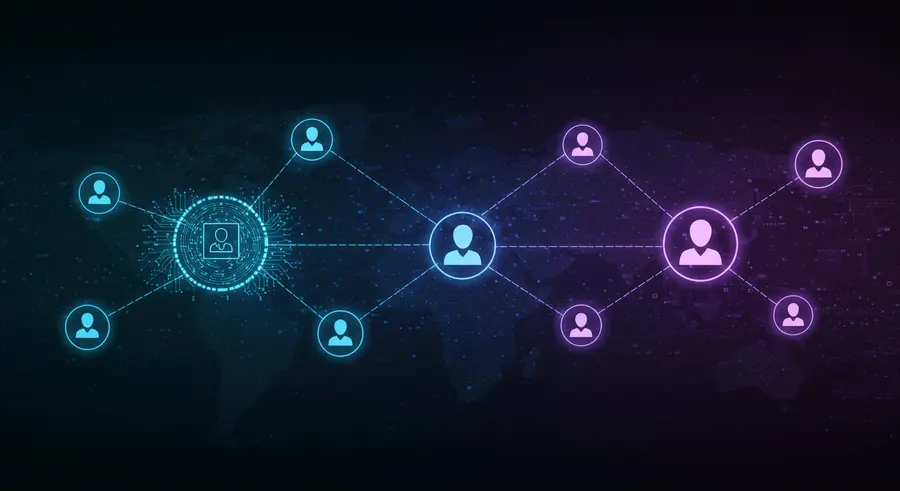Demystifying Decentralized Identifiers (DIDs)
In the evolving landscape of digital identity, Decentralized Identifiers (DIDs) stand out as a cornerstone technology, particularly within the framework of Self-Sovereign Identity (SSI). DIDs are a new type of identifier that enables verifiable, decentralized digital identity. Unlike traditional identifiers (like email addresses or usernames) that are often tied to specific organizations or platforms, DIDs are designed to be globally unique, resolvable with high availability, and cryptographically verifiable. They empower individuals and organizations to create and control their own identifiers without relying on a central registration authority.

What Exactly is a DID?
A DID is essentially a URI (Uniform Resource Identifier) that associates a DID subject (the entity being identified, such as a person, organization, or even a thing) with a DID document. This DID document contains important metadata, including cryptographic public keys, service endpoints, and verification methods, which are used to authenticate the DID subject and facilitate secure interactions.
The generic DID scheme is defined by the W3C (World Wide Web Consortium) and typically looks like this: did:method:specific-identifier
did: The URI scheme identifier.method: Specifies the DID method, which defines how DIDs are created, resolved, updated, and deactivated. There are many DID methods (e.g.,did:ethrfor Ethereum,did:sovfor Sovrin,did:ionfor a Bitcoin-anchored Sidetree network). Each method has its own underlying technology, often a distributed ledger or blockchain, to store and manage DID documents. You can learn more about specific methods at the W3C DID Spec Registries.specific-identifier: A unique string generated by the DID method that identifies the DID subject within that method's namespace.
How Do DIDs Work?
The lifecycle and operation of DIDs involve several key steps:
- Creation: A DID subject (or an agent acting on their behalf) generates a pair of cryptographic keys (public and private). The public key is often embedded in or referenced by the DID document, while the private key is kept secret and used for authentication and signing. The DID itself is then registered on the network specified by the chosen DID method.
- Resolution: When someone needs to interact with a DID subject, they use a "DID resolver" to look up the DID. The resolver queries the underlying distributed ledger or network associated with the DID method and retrieves the corresponding DID document.
- Verification: The DID document contains the public keys and other information needed to verify the authenticity of the DID subject. For example, if the subject signs a message with their private key, others can use the public key from the DID document to verify the signature. This process is crucial for establishing trust in digital interactions.
- Update/Deactivation: DID subjects can update their DID documents (e.g., to rotate keys or change service endpoints) or deactivate their DIDs if they are no longer needed. These operations are also managed according to the rules of the specific DID method.
Benefits of DIDs in Self-Sovereign Identity
DIDs offer significant advantages that align perfectly with the principles of SSI:
- Decentralization: DIDs are not controlled by any single central authority, reducing the risk of censorship, single points of failure, and vendor lock-in.
- Control & Ownership: Individuals and organizations have full control over their identifiers and the associated data. They decide what information is shared and with whom.
- Security & Verifiability: The use of cryptography ensures that DIDs are secure and that claims made by DID subjects can be cryptographically verified. This enhances trust and reduces fraud.
- Interoperability: While various DID methods exist, the common W3C standard aims to promote interoperability across different systems and platforms.
- Privacy: DIDs can help enhance privacy by allowing selective disclosure of information. Users can have multiple DIDs for different contexts, preventing a single identifier from linking all their activities. This is further supported by technologies like Verifiable Credentials.
DIDs and Verifiable Credentials
DIDs are often used in conjunction with Verifiable Credentials (VCs). A VC is a digital version of a physical credential (like a driver's license or a university degree) that is cryptographically secure, tamper-proof, and can be easily verified. The issuer of a VC signs it with their DID, and the holder (who also has a DID) can present it to a verifier. The verifier can then use the DIDs of the issuer and holder to confirm the authenticity and integrity of the credential without needing to directly contact the issuer for every verification. This creates a trust triangle between the issuer, holder, and verifier. For a deeper dive into how credentials work, you might explore resources like the W3C Verifiable Credentials Data Model.
The Future is Decentralized
Decentralized Identifiers are more than just a technical specification; they represent a fundamental shift in how we manage identity in the digital realm. By providing a secure, user-centric, and interoperable foundation, DIDs are paving the way for a new generation of applications and services that respect user privacy and enhance digital trust. As SSI gains traction, DIDs will play an increasingly vital role in empowering individuals with true ownership of their digital selves.
Interested in the broader applications of decentralized technologies? Check out how decentralization is impacting finance at CoinDesk for news and insights into the crypto world.